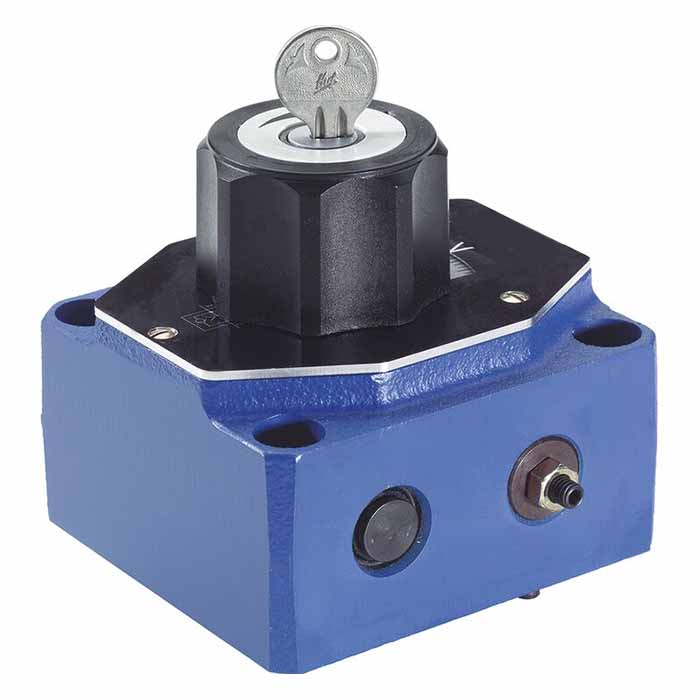Basic Performance Requirements for Flow Control Valves
Flow control valve is an important part of the hydraulic system, its basic function is to regulate the flow rate to control the action rate of the actuator to ensure the stable operation of the system. Flow control valves have a variety of types, such as throttle valves, check throttle valves, speed control valves, shunt valves, etc., these valves have their own application scenarios and characteristics in different working conditions. In order to ensure that these valves can operate reliably in practice, the following are the basic performance requirements of flow control valves.
1. Flow adjustment range and stability
Flow control valves need to be in the specified differential pressure between the inlet and outlet, can be realized from the minimum stable flow to the maximum flow of stepless adjustment. Usually, the maximum flow rate and the minimum stable flow rate should be greater than 50 to meet the needs of the system in different conditions. The opening of the regulating valve can precisely control the flow rate, thus realizing the precise control of the actuator speed.
2. Rigidity of flow and pressure characteristics
Flow and pressure characteristics of rigidity is one of the important indicators of flow control valves, it refers to when the external load changes, the valve output flow rate to maintain a stable ability. Good rigidity of flow-pressure characteristics can ensure that the system still maintains a smooth working condition when the load fluctuates. However, studies have shown that the performance of the throttle valve decreases when the rotational speed rigidity (T) is larger, so it is necessary to balance the rigidity and stability of the system in practical applications.
3. Adjustment sensitivity
The adjustment sensitivity of the flow control valve is an important performance indicator when adjustment is made through the handwheel. It should be operated gently and delicately to avoid excessive adjustment. The angle of the handwheel and the rate of change of the flow rate should be consistent as much as possible to ensure the smoothness and accuracy of the adjustment line. This feature is particularly important for the precise control of the system, especially in the fine-tuning of the flow rate, the sensitivity of the adjustment directly affects the control accuracy of the valve.
4. Pressure loss requirements
Flow control valve as a throttling element, in the process of controlling the flow will produce a certain pressure loss. In order to avoid excessive power loss, usually on the flow valve in the rated flow under the pressure loss has strict requirements. In general, the pressure loss should be controlled below 0.4 MPa, while at higher operating pressures, the pressure loss can be allowed to reach 0.8 MPa. Therefore, when designing and selecting flow control valves, products with low pressure loss should be selected as far as possible in order to improve the system's energy utilization efficiency.
5. Internal leakage control
In the use of flow control valves, the amount of internal leakage is also one of the important factors affecting its performance. When the valve is closed, a certain amount of internal leakage may occur between the inlet and outlet cavities, which will directly affect the minimum steady flow rate of the valve port. Therefore, in practice, the amount of internal leakage should be minimized to ensure stable operation of the system under low flow conditions.
6. The effect of oil temperature on viscosity
Changes in oil temperature will have an impact on the viscosity of the hydraulic fluid, which in turn leads to a decline in the accuracy of flow control. In order to minimize the impact of oil temperature changes on flow control, the actual production of thin-walled throttle valve is usually used. This type of throttle valve structure design can reduce the viscosity changes due to changes in oil temperature, thus ensuring the stability and accuracy of flow regulation.
Conclusion
Flow control valve as a key component in the hydraulic system, its performance requirements directly affect the system's operating efficiency and stability. In addition to the basic flow regulation capability, the rigidity of flow and pressure characteristics, regulation sensitivity, pressure loss control, internal leakage and adaptability to oil temperature are all key to ensure its stable operation. In different application scenarios, the selection of suitable flow control valves and optimized adjustment in combination with the actual working conditions will effectively improve the overall performance of the system.
Saivs brand
- Rexroth ZDR6D series pressure reducing valve
- A4VF500/A4VG28~71/A4VTG71/A4VG90~250/A4VHW90 rexroth hydraulic pump parts
- A4vso Series Rexroth Variable Plunger Pump
- A4VG series rexroth hydraulic pump
- Rexroth 4wrle10/16/25/35 series servo selonoid valve
- rexroth solenoid valve DBW10A DBW10B
- Tyre Changer
- PAVC Parker Hydraulic pump
- Small Hydraulic Winch 10 Ton Ship and Deck Machinery Used
- RVP hydraulic sandwich check valve
